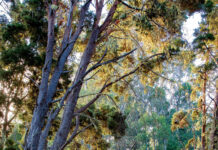Story by Shannon Wianecki | Photography by Mieko Horikoshi
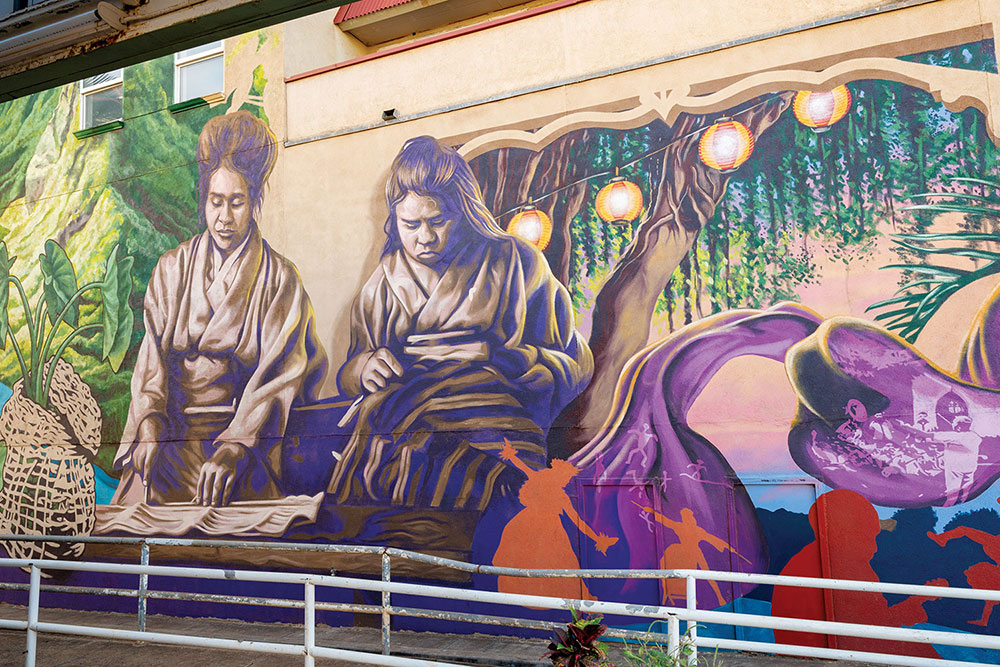
On a Friday afternoon in March 2022, Adaptations Dance Theater transformed the empty space in front of the Maui County courthouse into a dynamic stage. Wind whipped the dancers’ long floral dresses as they performed to a mix of music and spoken word, their fluid movements evoking breaking waves and schooling fish.
This single-day performance was one half of Small Town * Big Art’s newest public art project; O‘ahu artist Cory Kamehanaokalā Holt Taum created the other, more permanent half: a mural on the west-facing wall of 2121 Main Street. Entitled “Return to the Source,” the piece features a series of overlapping scales and ‘o‘opu, the native gobies that inhabit nearby ‘Īao Stream.
Informed by tradition and lived experience, both the mural and the choreography offer a new perspective on familiar landscapes. This is true for every piece produced by Small Town * Big Art, the initiative that has transformed Wailuku into an impressive, open-air gallery.
Wailuku has long been a place of power and convergence, the site of royal births and fierce battles. In 1905, this town at the foot of ‘Īao Valley became the seat of Maui County government. Many of the buildings that once housed markets, theaters and temples built during that era remain, but by the late 1960s, the majority of old kama‘āina (local) businesses had migrated to Kahului. Numerous attempts to revive the historic town fizzled out.
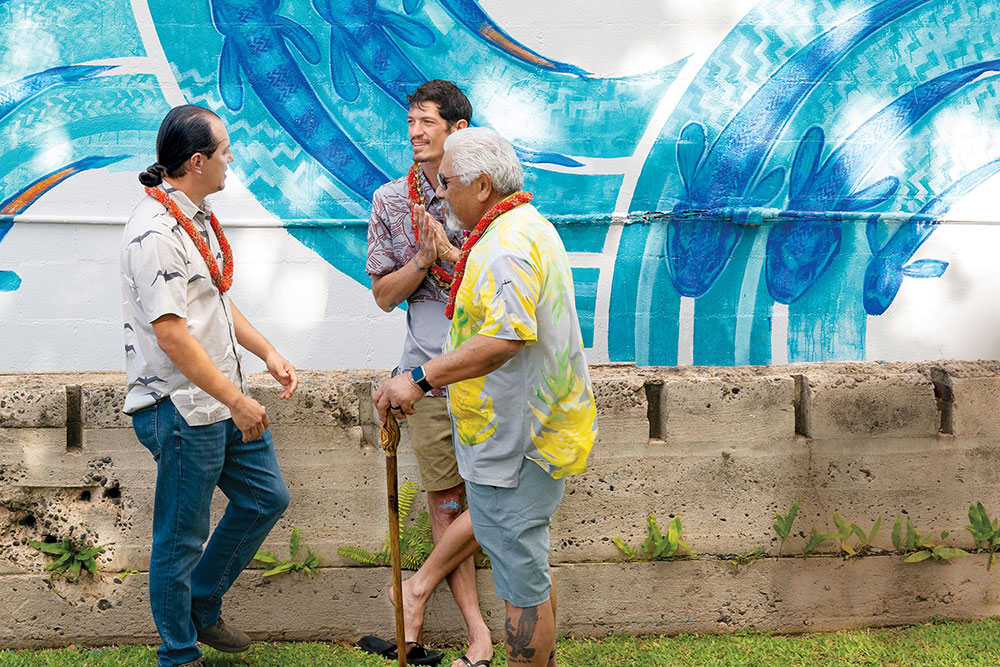
Art proved to be a catalyst for growth. In 2012, Kelly McHugh-White, marketing manager for the Hui No‘eau Visual Arts Center in Makawao, partnered with Erin Wade, the Maui County chief of planning and development, on a Wailuku mural project.
McHugh-White invited Philadelphia muralist Eric Okdeh to spend two weeks on Maui teaching and creating public art. Okdeh worked with local schoolchildren to create a lush collage of Maui scenes. The artwork’s themes arose from several months of talk-story sessions with local residents prior to Okdeh’s arrival. The resulting piece, “Nā Wai ‘Ehā” (“The Four Great Waters”), features a hula teacher extending her hands toward a young girl who is cupping water from ‘Īao Stream. Silhouetted in rays of sunlight in the background are images of complex local issues: the military bombing of Kaho‘olawe, burning sugarcane fields, and families separated by incarceration.
Okdeh installed the mural on the corner of Main and Market Streets and it became an instant landmark — and one of the artist’s most popular pieces. It caught the attention of PangeaSeed, an international nonprofit dedicated to “bringing the ocean into the streets” via public art. PangeaSeed helped McHugh-White and Wade create 10 more murals in Wailuku, each expressing a mauka-to-makai (mountain-to-ocean) theme.
Building on this success, McHugh-White and Wade joined forces with Sissy Lake-Farm, executive director of the Maui Historical Society and Hale Hō‘ike‘ike at the Bailey House Museum. Together, they formed Small Town * Big Art.
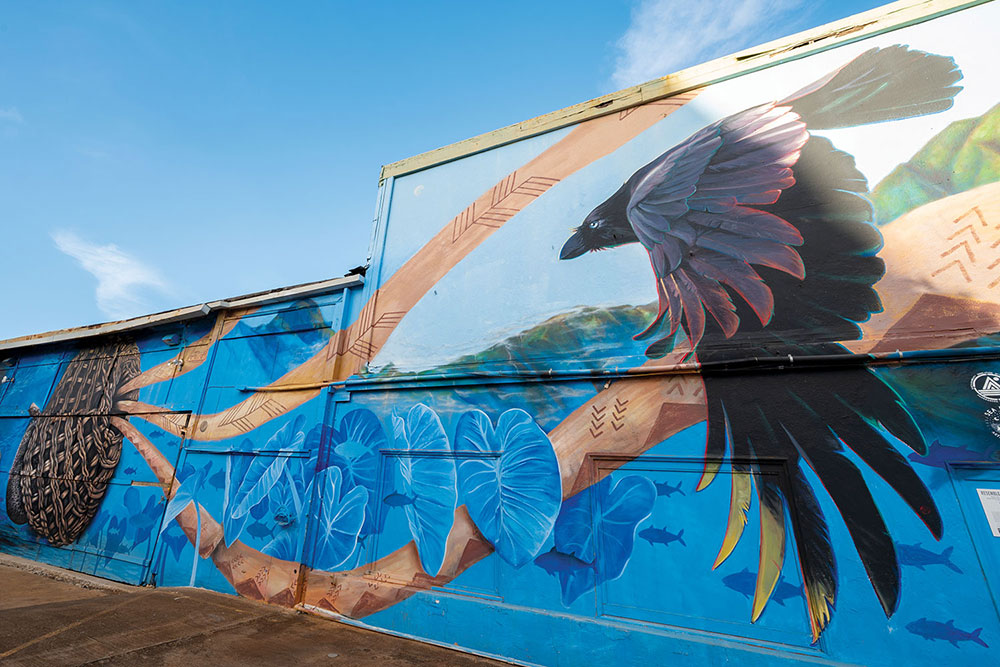
In 2018, the National Endowment for the Arts awarded Small Town * Big Art one of 60 national Our Town grants, and the team has since curated 38 pieces by 36 different artists. Their process is simple but rigorous: artists are invited to submit proposals addressing Wailuku’s unique history and culture. Upon selection, artists meet with Maui community members and kūpuna (elders), who share stories of Wailuku’s past and their hopes for its future. And each artwork must incorporate a bit of poetic wisdom from Mary Kawena Pukui’s book ‘Ōlelo No‘eau: Hawaiian Proverbs and Poetical Sayings (Bishop Museum Press). Pukui was Hawai‘i’s preeminent ethnographer, and her collection of proverbs reveals the broad range of indigenous ideology — a source of inspiration for artists of any medium.
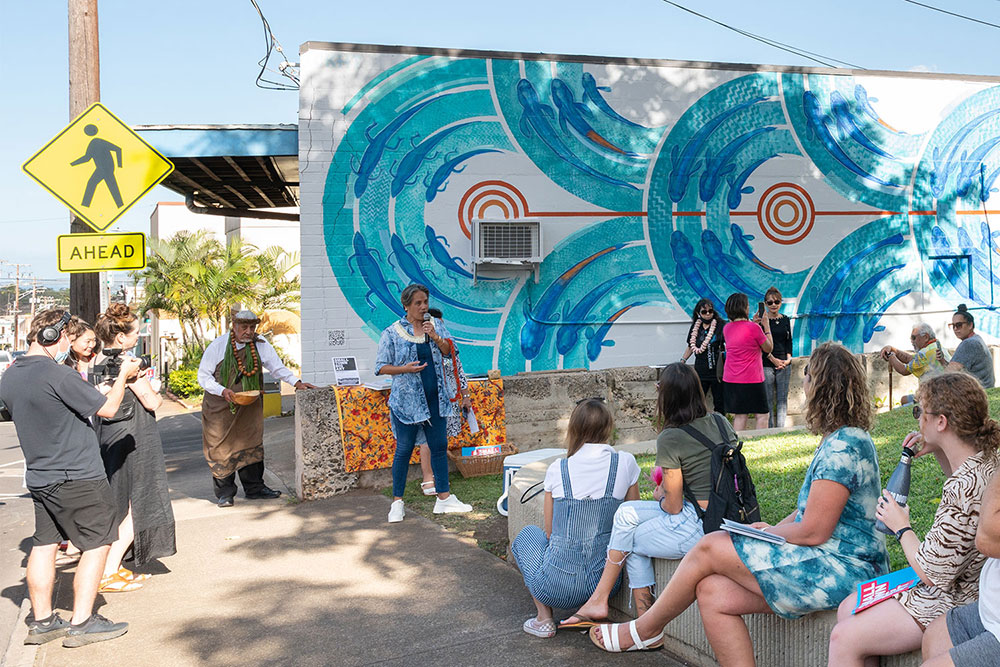
“Each and every detail of these murals is the result of months of conversation,” says McHugh-White. “It’s a rich process.”
The outcomes are rich, too. Okdeh returned to paint a second mural on the 1911 Kanda Home, once a boarding school for “unfortunate Japanese girls.” It features an elderly woman teaching a younger girl to sew a kimono. The billowing purple tapestry spells out the guiding proverb, Ma kāhi o ka hana he ola malaila, or Where work is, there is life. Canadian artist Emmanuel Jarus immortalized a local spearfisherman in an enormous portrait on the backside of the Maui Academy of Performing Arts building. Local luminaries Kirk Kurokawa, Noble Richardson, Elmer Bio and Amanda Joy Bowers collaborated on two murals. One, “Resemble the ‘Alalā,” is a dramatic rendering of a Hawaiian crow, a traditional fish trap and an octopus.
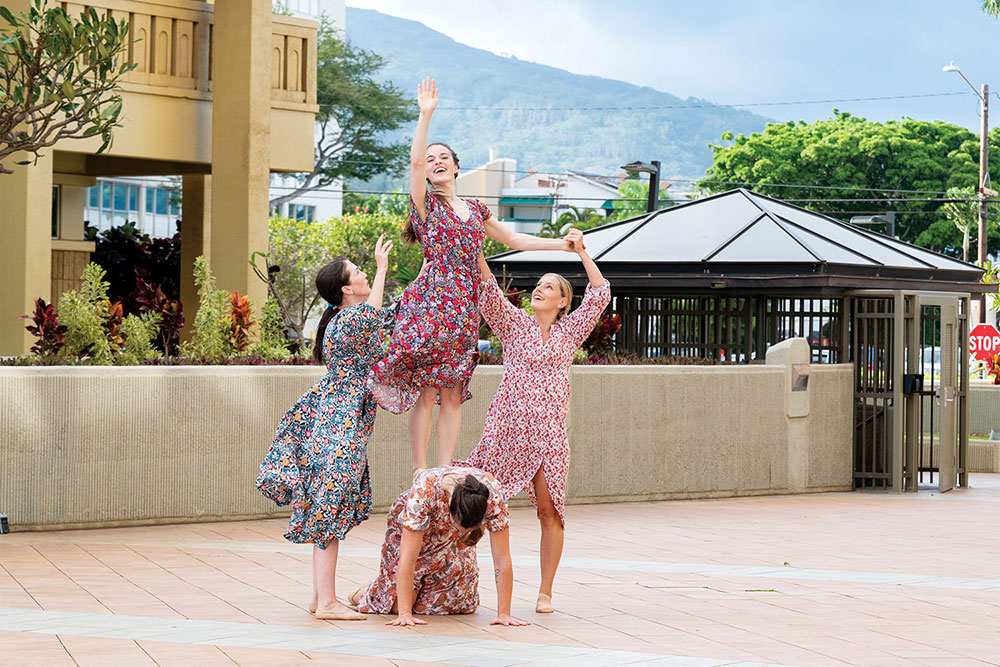
More than simple street art, each Small Town * Big Art piece includes nuanced references to local history and ecosystems. The crow that now watches over Main Street isn’t just any bird, it’s an endemic Hawaiian ‘alalā, among the rarest species in the world. Its pale blue eye indicates that it’s a juvenile — a message of hope for the future. This authenticity and attention to detail reflects the community’s aloha for their home, and encourages a deeper sense of belonging.
The murals are just one facet of Small Town * Big Art, and the initiative also has produced sculptures, dance performances and storytelling sessions. “We really try to avoid being pigeonholed as a mural project,” says McHugh-White. “Wailuku is a performing-arts town.”
One especially captivating performance was permanently documented using new and unique technology. Artist Lori Hepner taught ‘Īao Intermediate School students how to draw with light, using their bodies. Their dance was preserved as augmented reality (AR) animation, which visitors can access by pointing a cellphone at two mural decals on the wall of the building at 62 North Market Street, next-door to the Historic ‘Īao Theater.
One of Small Town * Big Art’s shortest-lived pieces is among its most poignant. “Mana Wahine,” a collection of three murals, decorates a temporary wall surrounding the municipal parking lot construction area. Here, Bowers painted a young Pukui facing Vineyard Street. “Mary Kawena Pukui has taken over Wailuku,” McHugh-White says.
The Small Town * Big Art team hope to bring its magic to other Maui communities. Using their latest NEA grant, they’ll create a public-art master plan for Maui and will choose three new neighborhoods in which to work. Think your area could use an infusion of art? Go to smalltownbig.org and nominate your community.
Visit smalltownbig.org to see a map of the art in Wailuku. IG/FB @smalltownbigart
For three different walking tours featuring all of the artwork, download the Ho‘okama‘āina app. mauimuseum.org/app




